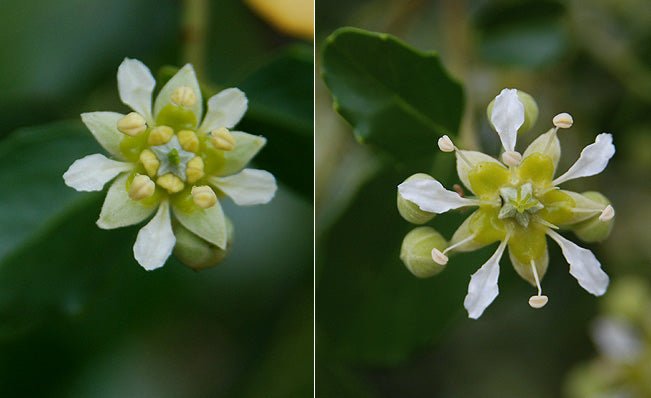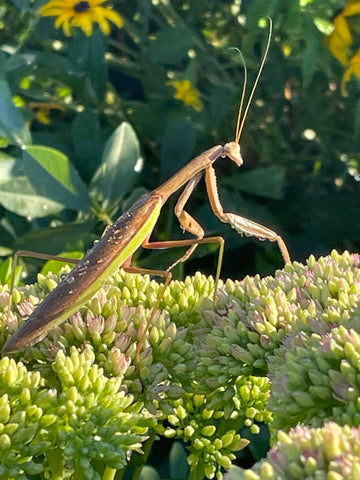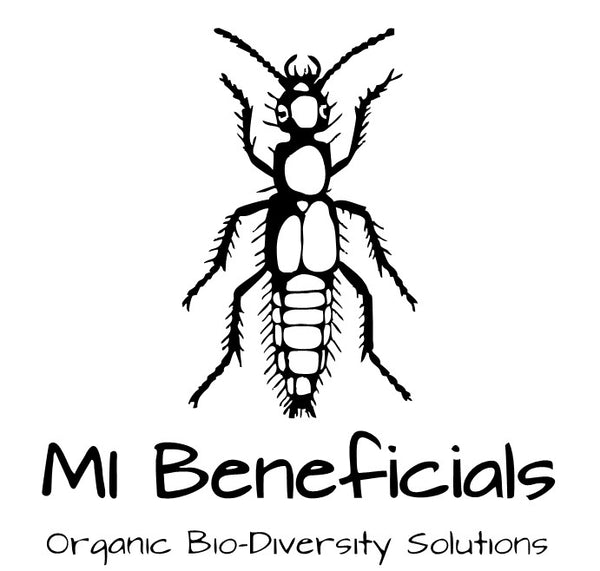
What is Quillaja saponaria and How Does It Benefit Our Plants?
Mark AshworthShare
Quillaja (Pronounced Quill-a-ya) saponaria extract comes from the bark of the Quillaja tree found in Chile and Peru. It has been used for decades in the food, beverage, cosmetic and pharmaceutical industries for it's emulsifying, foaming and anti-microbial characteristics.

Flowering Quillaja Tree (Images Courtesy of Oregon State University)
Quillaja contains Glycoside saponins, which includes Triterpenoid saponins. Triterpenoid saponins have been shown to increase resin production, improve soil health and expedite development in plants, thus it is an extremely beneficial addition to your tool-belt in the garden.
Interested in digging deeper? Checkout this great article from Annual Reviews which provides better insight on Quillaja Saponin and Tripterpenoid saponins
Things to Consider
1. How is it made?
2. What is it used for? Powdered concentrate (cosmetics and food/beverage industry) and cold-press extracted (horticulture industry)
3. Why is it beneficial to our plants?
4. How do I use it?
How Is It Made?
Quillaja saponaria is extracted by boiling the bark of the Quillaja tree in water through an aqueous extraction. This concentrated liquid can contain 8-10% saponin based on the extraction specifications.
For powdered concentrates, that liquid is filtered multiple times to further concentrate the saponins. It is then dried into a a soluble powder which can be added for its intended use.
The cost of Quillaja goes up exponentially as you increase the saponin percentage. This is due to the increased amount of raw material and processing required to produce such high saponin concentration.
Looking for Horticultural Quillaja extract? We carry Earthcraft Biosystems Regenerator which is 55% Quillaja saponaria and 45% Yucca schidigera (pure liquid extracts)
What is It Used For?
Cosmetics - Quillaja saponaria has been used for years in cosmetics (body washes, shampoos, hand soaps) because of its ability to form an ion cluster of both fat-attracting and water-attracting ions. This allows dirt/impurities on skin to both be attracted to the fat portion of the cluster, but then be mobilized and washed away with water.
Food and Beverage - Quillaja saponaria has also been used in the food and beverage industry as additives to things like gelatin's, soft drinks, ice cream and baked goods. It's ability to be used as a foaming agent and emulsifier have created a purpose for it's use for years.
Pharmaceuticals - Quillaja saponaria is used in the pharmaceutical industry as an emulsifier and stabilizer. It has also been shown to have anti-inflammatory, anti-microbial and cancer fighting properties which make it a great prospect being used in the future development of pharmaceuticals.
Horticulture - Quillaja saponaria has been recently commercialized in horticultural use for its wetting ability, especially in hydrophobic media containing peat and coco coir. More importantly, Quillaja saponaria contains effective levels of Tri-terpenoid saponins.(more on that below)
When used in extremely high concentrations, it also has a natural pesticide characteristic; effectively smothering soft-bodied targets.
See How Much Cheaper Using Earthcraft Horticultural Quillaja is versus Powdered Concentrates
How is Quillaja saponaria (and Triterpenoid saponins) Beneficial for Our Plants?
Quillaja saponaria contains Triterpenoid saponins which are a secondary metabolite that is found in certain plants (specifically cannabis). Triterpenoid saponins have been shown to have multiple different horticultural benefits including improved plant growth, nutrient uptake and resin production. They have also been shown to act as a natural pesticide with the anti-microbial and foaming characteristics.
Resin Production
Triterpenoid saponins work because they increase the enzymatic activity involved in resin biosynthesis: the process involved in the production of resin. Further, the same anti-microbial and anti-inflammatory characteristics making it useful in medicine can help protect the plant from stressors and diseases that can negatively impact production of resin.

Plant Growth and Nutrient Uptake
Triterpenoid saponins can help improve your soil health, promoting better plant growth and improved nutrient uptake. By acting as a soil conditioner, these saponins help not only to maintain the moisture in soils, but they help break the  hydrophobic bond in dried out substrate.
hydrophobic bond in dried out substrate.
As a Natural Pesticide
The name saponin is derived from the Latin word sapo for soap because of the soap-like, anti-microbial properties they provide, thus using them in appropriate doses has been shown to work as a natural pesticide that won't have massive collateral damage to your other beneficial predators.

How Do I Use It?
Both the concentrated powder and the liquid extracts can be used similarly in their application, the main difference will be the amount mixed per gallon. We recommend following whatever brand you have purchased because they can contain varying levels of saponins (anywhere from 10-12% in a liquid, up to 80% in a powder form).
We use a liquid Quillaja that was created specifically for horticultural use which is the liquid extract that does not get concentrated, thus 10-12% saponins is what we use and have found extremely effective with our plants.
Checkout EarthCraft BioSystems Pure Quillaja/Yucca Extract (Regenerator) Starting at $22 a Bottle
Root Drench
The liquid extract we use (Regenerator) calls for 1ml to 2ml per gallon with each watering throughout the entire grow. By using it on each watering, it assures that your plants are getting enough of those secondary metabolites that keep you firing at 110%. It also helps keep your peat or coco based medias from going hydrophobic in places you can't see and won't find. In large volume, no-till beds, it can be detrimental to have big hydrophobic pockets where roots won't grow.
Foliar
Using Quillaja in high concentrations as a foliar spray is not the most effective way to control a pest problem. It can be EXTREMELY costly to use "kill rate" levels of Quillaja saponaria and it really only smothers soft-bodied adults. Check out other high-quality horticultural oils, which will cost less per gallon and be more effective, if that is the route you wish to take.
With that said, using it in your foliar sprays can absolutely help from a preventative standpoint. The emulsifying and surfactant characteristics enable it to stick evenly to your plants foliage.
Conclusion
Quillaja is more than just a foaming agent and surfactant in our garden, it contains Triterpenoid saponins. These saponins have been shown to significantly increase resin production and improve plant growth which equates to better quality product and higher yields. Understanding what these horitcultural constituents can do for our plants when used in your watering practices can truly unlock our plants' potential to do great things.
Quillaja can be EXTREMELY expensive! The product we carry from Earthcraft Biosystems (Regenerator) is much more cost effective.
Regenerator is a pure, organic liquid extract of both Quillaja saponaria 55% and Yucca schidigera 45%. The recommended dose is 1ml per gallon which means 1 liquid ounce makes 29.5 gallons and our 4oz (120~ gallons) bottle is $22 (shipping included)
Checkout These Helpful Guides
- How To Release Your Living Soil Bio-Diversity Pack
- How To Manage Grey Potato Bugs in Living Soil Containers
- How to Release Your Bio-Diversity Pack in a Bioactive Terrarium, Vivarium or Reptile Enclosure
- How to Make Sprouted Seed Tea with Blue Corn
- How To Use Coconut Powder in the Garden
- How to Use Bokashi (and Why You Absolutely Should)
- How to Use Aloe in the Garden
- What is The Nutrient Cycle?
- Using Beneboost for Healthy Plants and Booming Beneficial Populations
Read More About These Key Soil-Based Beneficial Insects
- Oribatid Mites (Oribatida)
- Rove Beetles (Dalotia coriaria)
- Stratiolaelaps scimitus (Hypoaspis miles)
- Springtails (Collembola)
- Red Wiggler Worms (Eisenia Fetida)
- Enchytraeidae (Pot Worms)
